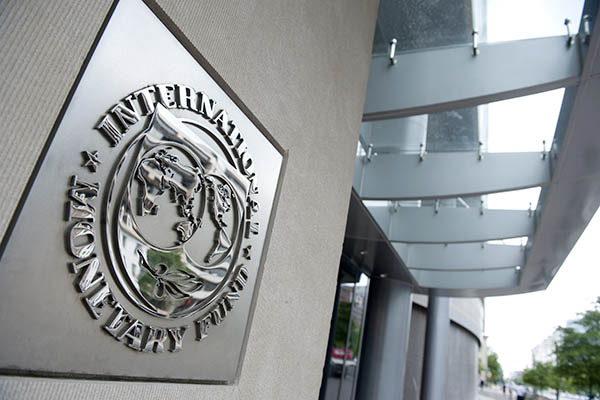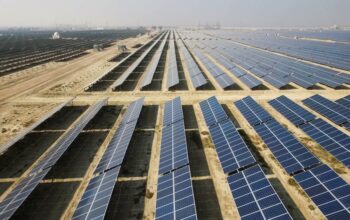Taking stock of the progress made over the period covered by the Fund’s EFF program, it is amply clear our economy is no better than before.
By Muhammad Ali
With the International Monetary Fund (IMF) expected to revive a USD 6 billion Extended Fund Facility (EFF) for Pakistan in late August, much is being made these days of the benefits of the program for the country’s economy. Taking a dispassionate look at the state of our economy, however, tells quite another story.
Although the government of Prime Minister Shehbaz Sharif is seeking a one year extension, the original program Pakistan signed up to on the watch of former Prime Minister Imran Khan in 2019 is nearing closure.
At this juncture, Pakistanis have a right to ask, for instance, if any of the macroeconomic imbalances the programme set about to fix have been fixed? Which way have the growth and employment numbers moved, and where has inflation gone?
Or, in a nutshell, is the intrinsic health of our economy better now than when the programme began or worse? Let us take stock of the situation and find out.
The IMF’s Executive Board gave its nod to the 39-monhs EFF for Pakistan on July 3, 2019, it expressly said the EFF-supported program would help Pakistan “reduce economic vulnerabilities and generate sustainable and balanced growth focusing on: [1] a decisive fiscal consolidation to reduce public debt and build resilience while expanding social spending; [2] a flexible, market-determined exchange rate to restore competitiveness and rebuild official reserves; [3] to eliminate quasi-fiscal losses in the energy sector; and [4] to strengthen institutions and enhance transparency”.
Two days later, Pakistan’s prestigious Dawn daily carried an op-ed piece by Jihad Azour, the director of IMF’s Middle East and Central Asia Department, in which he took stock of the situation and explained the way forward under the government’s IMF supported “comprehensive three-year programme to stabilise the economy and lay the foundation for robust and balanced growth.”
Fast forward three years and the ills of our economy the program promised to cure are worse than ever. Not only do the macroeconomic imbalances show no signs or going away any time soon, the government has also failed to fix cash bleeding energy sector.
The current account deficit that stood at USD 18 billion in 2018 is only marginally better at USD 17.4 billion for fiscal year ended on June 30, 2022 – the second highest absolute CAD in the history of the country.
The budget deficit has remained over 7 percent of GDP every fiscal year in last three years, and the tax-to-GDP ratio had declined to about 9 percent of GDP for the current fiscal year.
Out total public debt and liabilities have sharply increased over this period, climbing to over PKR 53 trillion from PKR 29.8 trillion three years ago.
The cash bleeding power sector’s woes have multiplied and the monster circular debt that stood at PKR 1.1 trillion then has now escalated to PKR 2.5 trillion as of end June 2022.
The foreign currency reserves held by State Bank of Pakistan (SBP) have decreased to USD 8.3 billion on July 29, 2022 – about the same level when the program was signed in 2019.
Budget deficit could not be curtailed in last three years despite a rebasing of the economy, but has escalated to over PKR 5000 billion or 7 percent of GDP in 2021-22.
The trade deficit experienced historic height and stood at almost USD 48 billion in last fiscal year because the import bill touched USD 80 billion mark. The current account deficit is projected to be between USD 16 billion and USD 17 billion for the last fiscal year.
The tax to GDP ratio has declined in last fiscal year despite this fact that the FBR achieved its upward revised target of PKR 6100 billion. The rebasing of national accounts inflated the size of the economy, resulting in the diminishing of the tax-to-GDP ratio to 9 percent.
On power sector, the monster of circular debt has been mounting despite raising electricity tariff. The power sector faced losses of over PKR 1,500 billion and the circular debt stood at PKR 2,253 billion on June 30, 2022. The circular debt of gas sector stood at PKR 1,400 billion.
Inflation skyrocketed to 21.3 percent in June 2022. The losses of State Owned Enterprises (SOEs) is another area where there is no improvement.
Probably the only appreciable changes between then and now are the inflation that is at a historic high, and a free-floating rupee, which contributed to it in a big way.
All these macroeconomic numbers show that the IMF-supported reform program – like every other IMF-supported program before it – has failed to overcome the deep-seated structural problems of Pakistan’s economy.
Where do we go from here?
Copyright © 2021 Independent Pakistan | All rights reserved




